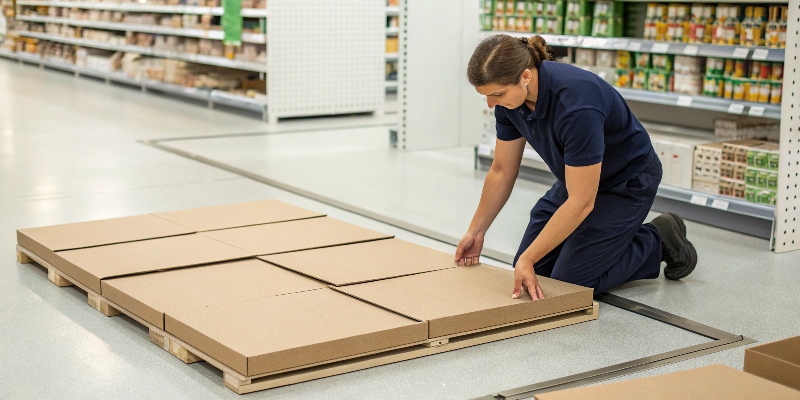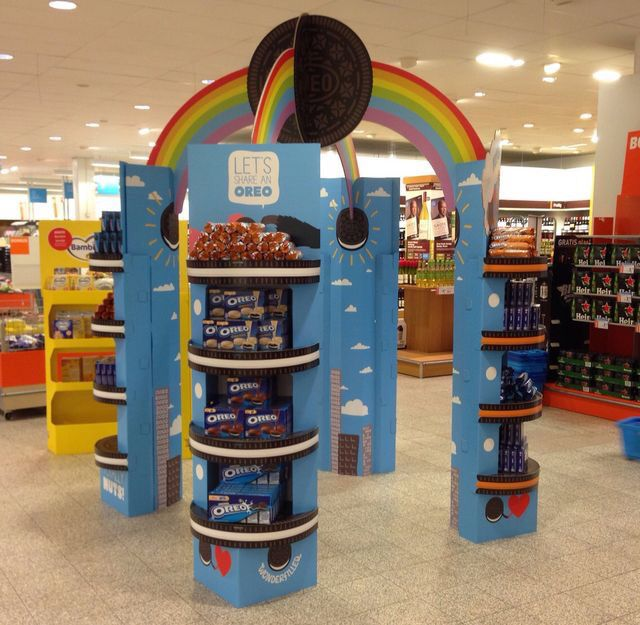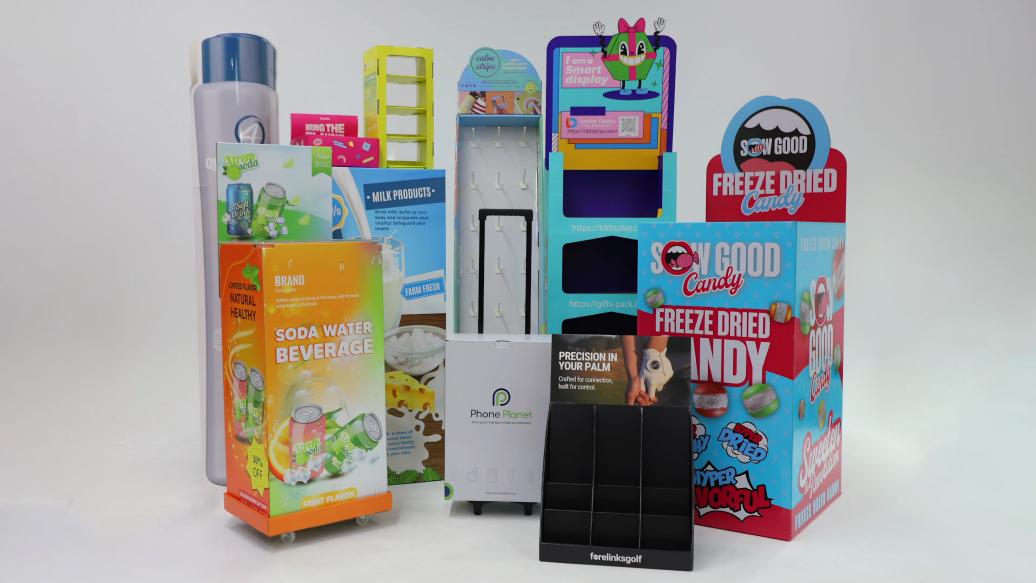Choosing a display partner feels like a gamble. You invest time and money, but will the final product truly deliver results? This uncertainty can be stressful and costly.
A great retail display provider shows you a portfolio of successful projects, offers transparent pricing, and understands your brand's goals. They should also have deep knowledge of materials, structural design, and retail logistics to ensure your display performs well in-store.

Finding the right partner is a big decision. Over my 16 years in this industry, I've seen how the right choice can make a product launch a huge success, while the wrong one can lead to missed opportunities and wasted budgets. It's about more than just a good-looking design; it’s about finding a team that becomes an extension of your own. You need a partner who understands the entire lifecycle of a display, from the initial concept to the final setup on the retail floor. Let's break down what you should be looking for to ensure you make the right choice.
How do you measure the effectiveness of a display system in the retail industry?
You've launched your new display, but you're not sure if it's actually working. Without clear data, you can't justify the expense or improve your next campaign.
To measure display effectiveness, track key metrics like sales lift for the featured product, changes in foot traffic around the display, and customer interaction. Compare sales data from before and during the campaign to see the direct impact on your bottom line.

Measuring success is not just about feeling good; it’s about knowing what works so you can repeat it. It’s crucial to set your goals before the display even hits the factory floor. Are you trying to boost sales of a specific item, introduce a new product, or just increase brand awareness? Your goal will determine what you measure. For one of my clients, a snack food company, the main goal was to increase trial of a new flavor. We designed a display with a "try me" dispenser. The key metric wasn't just sales; it was the number of samples taken versus the number of purchases made. This showed us the display was effective at generating interest and converting that interest into sales.
Key Performance Indicators (KPIs) to Track
You need a simple way to see what's working. Focus on a few core metrics that directly link to your campaign goals. This avoids getting lost in too much data.
| Metric | What It Tells You | How to Measure It |
|---|---|---|
| Sales Lift | The direct impact on sales. | Compare product sales for the 4 weeks before the display to the 4 weeks during the display's presence. |
| Foot Traffic | How well the display attracts shoppers. | Use store traffic counters or observe how many people stop or slow down near your display. |
| Customer Engagement | If customers are interacting with it. | Track social media mentions, QR code scans, or the number of samples taken from the display. |
How do retailers decide what to include in displays?
You have a great product, but retailers aren't putting it in their displays. It can be frustrating when you don't understand their selection process.
Retailers choose products for displays based on sales data, seasonal demand, promotional schedules, and brand partnerships. They prioritize items that are proven sellers, relevant to the current season or holiday, or part of a larger marketing push.

Understanding the retailer's mindset is key to getting your product featured. They have limited space and need to maximize profit from every square foot. Their decisions are almost always driven by data and planning. I once worked with a startup that had an amazing new sauce. They wanted a big display for the summer. But the retailer's data showed that their customers were focused on grilling and barbecue supplies. So, instead of a standalone display, we designed a smaller "cross-merchandising" display that could be placed right next to the hot dogs and burger buns. The retailer loved it because it supported their existing strategy, and my client’s sauce sold out.
The Retailer's Checklist
Retailers think logically. Their decision to feature a product comes down to a few core factors. Knowing these can help you position your product for success.
- Proven Sales History: Does your product sell well on its own? Retailers are more likely to give premium space to a product they know will move. Provide them with your sales data to build confidence.
- Seasonal and Event Tie-Ins: Does your product fit with an upcoming holiday, season, or local event? A display for sunblock makes sense in summer, not winter. Align your pitches with the retail calendar.
- Margin and Profitability: How much profit does the retailer make on each unit sold? Products with higher margins are often more attractive for special displays because they generate more income for the store.
Who sets up store displays?
Your perfectly designed display just arrived at the store. But who is responsible for building it correctly? Confusion here can lead to a messy, ineffective presentation of your product.
The responsibility for setting up displays varies. It can be the brand's own field team, a hired third-party merchandising company, or the store's own employees. Always provide simple, visual instructions to ensure anyone can assemble it correctly.

This is one of the most overlooked parts of a display campaign. As a designer and manufacturer, my job isn't done when the display leaves my warehouse. A brilliant design is useless if it can't be assembled quickly and correctly on the store floor. I learned this the hard way early in my career. We created a complex, multi-part display that looked amazing. But we heard back from the client that most of them were assembled incorrectly or not at all. From that day on, we made "ease of assembly1" a top priority. Every display we ship now includes a simple, one-page instruction sheet with lots of pictures and minimal text. We even pre-assemble as many components as possible.
Assembly Responsibilities and What They Mean for Your Design
The person building your display has a direct impact on how it will look. You must design for the person who will actually be doing the work.
| Assembled By | Primary Challenge | Design Solution |
|---|---|---|
| Store Staff | Limited time and training; not their main job. | Make it extremely simple. Use interlocking parts, pre-taped sections, and clear, visual instructions. Aim for under 5 minutes assembly time. |
| Brand Team | They are trained but need to be efficient. | Design for speed and consistency. Create a design that is hard to assemble incorrectly. Numbered parts can help. |
| Third-Party Merchandisers | Professionals, but they handle many brands. | Your display needs to stand out. Ensure instructions are packed obviously and the design is intuitive so they can build it right the first time. |
Which example describes a good retail display?
You want to create a display that gets results. But what does a "good" display actually look like in a real store environment?
A good retail display is simple, strong, and tells a clear story. For example, a back-to-school display shaped like a yellow school bus, holding notebooks and pens in easy-to-reach bins, is instantly understandable and encourages shopping.

A great display does more than just hold products; it stops a busy shopper in their tracks. It should communicate the product's purpose and value in about three seconds. One of my favorite projects was for a new organic juice brand. The product was all about fresh, simple ingredients. So, we designed a display that looked like a rustic farm stand. It was made from natural-looking corrugated cardboard, had a simple "Freshly Squeezed" headline, and held the colorful juice bottles in crate-like shelves. It didn't need a lot of words. The design itself told the story of freshness and nature, which made shoppers curious to try the product.
Anatomy of a Great Display
A successful display isn't an accident. It's a combination of smart thinking across a few key areas that work together to attract and convert shoppers.
- Structural Integrity: The display must be strong enough to last for the entire campaign. It can't sag or fall apart. We always test our designs with the actual product weight to make sure they can handle the busy retail environment.
- Clear Visual Hierarchy: The most important information should be at eye level. This is usually the brand name and the main benefit. The products themselves should be easy to see and grab. Don't make the customer work to understand what you're selling.
- Simplicity in Shopping: A customer should be able to take a product from the display without causing an avalanche. We design shelves and pockets that make it easy to remove one item at a time. If it's hard to shop, customers will just walk away.
Conclusion
Finding the right provider means choosing a partner who understands your goals, the retailer’s needs, and how to create a display that works from concept to the store floor.
-
Explore this link to learn how to design displays that are easy to assemble, saving time and reducing errors. ↩





